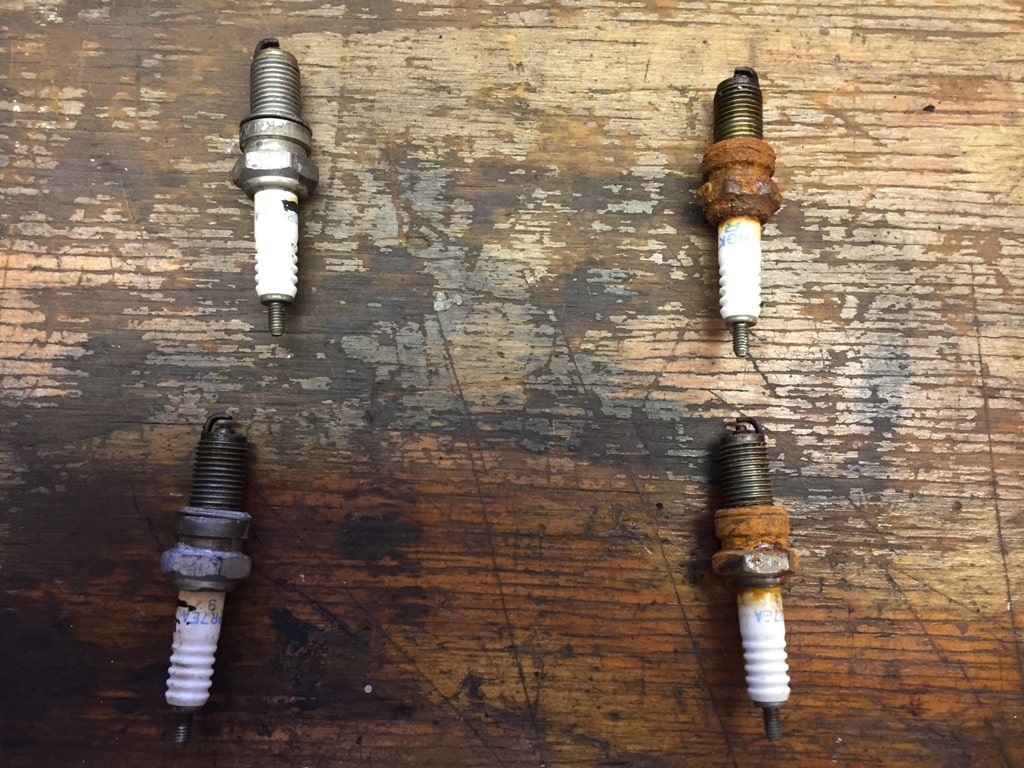Winter Maintenance Tips To Prep Your Bike For Spring & Summer Riding
I recently parked my old 1998 Yamaha Royal Star in my father’s garage for some long-overdue and much needed maintenance. The old girl has about 88K miles on her, and I decided to give attention to several issues during these winter months. My parents live about an hour and a half south of us, so my goal was to get down there several times across the cold months to freshen everything up for the 2020 riding season.
I didn’t realize how grimy and filthy the motorcycle had become in recent years until we got down under the seat and tank. I normally wash the bike 2-3 times during the peak riding months, but every few years I dismantle it deeper, to clean, upgrade, or replace anything necessary. This was clearly long-overdue as well.

She cleans up nice, for an old gal.
Here in the “Deep South”, riding season really is year round, with great riding days periodically available from December through February. Yet we do get the occasional sour weather, like so many of you experience more frequently in the rest of the country. So I try to create some margin to attend to some necessary maintenance before Spring. Here’s our Road Dirt “To-Do” list of Winter Maintenance Tips. At the end, comment below with any of your practices. And if you don’t have any practices, maybe it’s high time you establish a few!
The first item I attend to is of course, an oil and filter change. Always go with the factory recommended oil grade, and I think its best to get motorcycle-specific oil, not just generic automotive oil. Often, whether standard or synthetic, motorcycle oils (even if you don’t buy your brand’s own labeled oil) contain extra additives or composition blends to meet the specific needs of our smaller, higher revving engines.
I removed the saddlebags from the Royal, to access the final gear oil reservoir. There are three kinds of final drives on motorcycles- shaft (my Royal Star), chain (my Bonneville), and belt (Harleys, most Indians, some BMWs, etc.). These need TLC too, whether cleaning, tension adjusting, replacing, or in the case of my big Yamaha, draining and refilling the final gear oil. In many shaft drives, this grade of oil is different than main crankcase oil. In my case, 80W-90 gear oil is called for, the manufacturer recommended grade. I also gave the whole area (rear wheel, fender, drive shaft) a good bath while back there.
I always check my tires for proper pressure, tread depth, any uneven wearing, punctures with embedded nails, and small cracks in the rubber along the bead. I actually set an alert on my phone to check my tires monthly, but give a thorough inspection in the winter, while I’m making my maintenance rounds on a bike. While there, inspect your brakes for pad depth, your brake fluid reservoirs for proper levels, and check to ensure you don’t have water or particulates in the fluid. Both my bikes are also water cooled power plants (Yes, 2016ff Triumph Bonnevilles are water cooled now), so I annually check the level and condition of my coolant and hoses. It’s a good idea to drain and refill with fresh fluid, which helps the engine run better in hot summer riding.
Those were some filthy carbs, mister.
With my pappy’s help, we removed the seat and tank, checked the petcock, and removed the airbox housing and filter. I utilize reusable factory filters, and last year, we discovered a mouse nest up inside it! So I certainly made it a point to remove and disassemble the whole housing, to clean the filter and wipe everything clean. Fortunately, no critter nests this year. But underneath, we found cached-on “road dirt”, filth and grime coating the carburetor bay. My old Royal Star has a pretty complex 4 carb setup, but we got it disconnected and removed, gave it a thorough cleaning inside and out, then reinstalled it, all within a few hours. It had been a few years since I’ve last pulled the carbs, so this was quite overdue. If your bike has EFI, its a good idea to add some quality injector cleaner to the tank, and run it through your fuel system to reduce sediment and carbon deposits.

Amazing they were still firing…
We also pulled the plugs on the Yamaha, which in this case had 10 years on them! These NGK plugs went the distance, for sure. It’s good to check them at least yearly (which I confess I’d not done), and replace if they look burnt, rusted from water, or corroded. While there, we looked over the plug wires as well, to insure there was no splitting or cracking.
I also inspect my levers and cables, lube any to freshen up their action, and look over my various hoses. My Royal is getting a bit “long in the tooth” in years and miles, and I’ve had to replace a few in recent years that were getting brittle and showing some cracking.

I keep several of these, and they’ve yet to fail me.
Lastly, inspect your lights, turn signals, and accessories you may have installed. And while attending to the electricals, I always keep my bike batteries on trickle chargers across the winter, even removing them from the bikes to my basement for charging if extended periods of foul or freezing weather are approaching.
My philosophy is, I’d rather ride when the weather turns favorable, and attend to the maintenance when I’ve less chance to ride. It’s refreshing to throw a leg over a winter-prepped motorcycle, thumb the starter, and motor off into the new riding season on a bike that’s truly ready to roll.
What’s your motorbike routine for the winter? Drop your thoughts and comments in the section below. Bring on the Spring!
Rob

The Bonney will be freshened up by Spring as well.



























Hey Rob, really enjoyed reading this. You’re doing the right things in bike care. At the moment my battery is being charged. Not a sound or click yesterday after simply trying to start it up. Need to keep my tender on which I didn’t. Not many miles on it since the last oil change, but I do need to get it on the road. Thanks man for the tips.
Yeah man, looking forward to seeing the TCB Victory out on the roads this year!